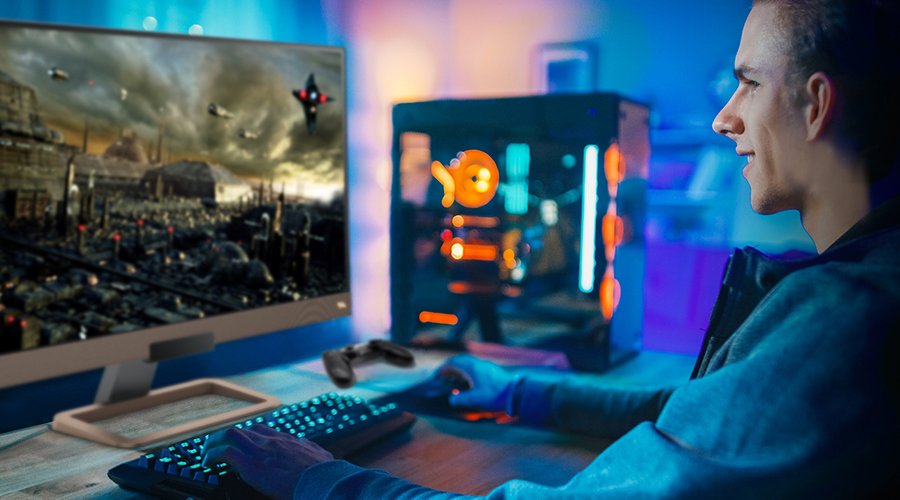Yes, matte screens objectively don’t look as good as glossy. But that’s in a highly controlled environment. In the real world, matte monitor surfaces are the only practical and rational way to go.
Matte monitors employ plastic surfaces made of different polymers that undergo an etching process. Either chemical or mechanical, the etching creates an enormous number of grooves or indentations in the screen surface. These serve to reduce reflectivity by scattering light that hits the monitor. While some minor glare may still occur, it never even comes close to the full-on reflections you have with glossy displays.
But a screen that rejects light invariably also blocks light. While glossy screens allow whatever the display shows to come through nearly unfiltered, matte screens block much more of the monitor’s light output. In essence, with matte screens you get less image illumination, or just less image. Some minor details may be diminished, contrast gets lowered, and colors don’t appear as alive as with a glossy screen.
But your poor eyes also don’t need to put up with stressful reflections and tiresome glare. Nor do you need to fear touching the screen, as matte displays don’t grab fingerprints as readily as glossy screens. Thus, for monitors matte makes the better option. You don’t need to worry about placing a lamp on your work or gaming station, because reflections won’t be an issue. You don’t have to think ten times before opening the curtains and letting some light in. With matte screens, light isn’t your enemy.
Unlike TVs, for monitors matte makes for an absolutely obvious choice, especially since modern monitors continue to add brightness. While even five years ago a 300-nit monitor was good, today you easily get 500-1000-nit panels that meet DisplayHDR 400 and DisplayHDR 1000 requirements. While monitors get brighter, matte materials stay the same and so in effect more light shines through the anti-glare protection. Simply put, image quality on matte monitors keeps improving. You’d be hard pressed to tell the difference in most cases.



